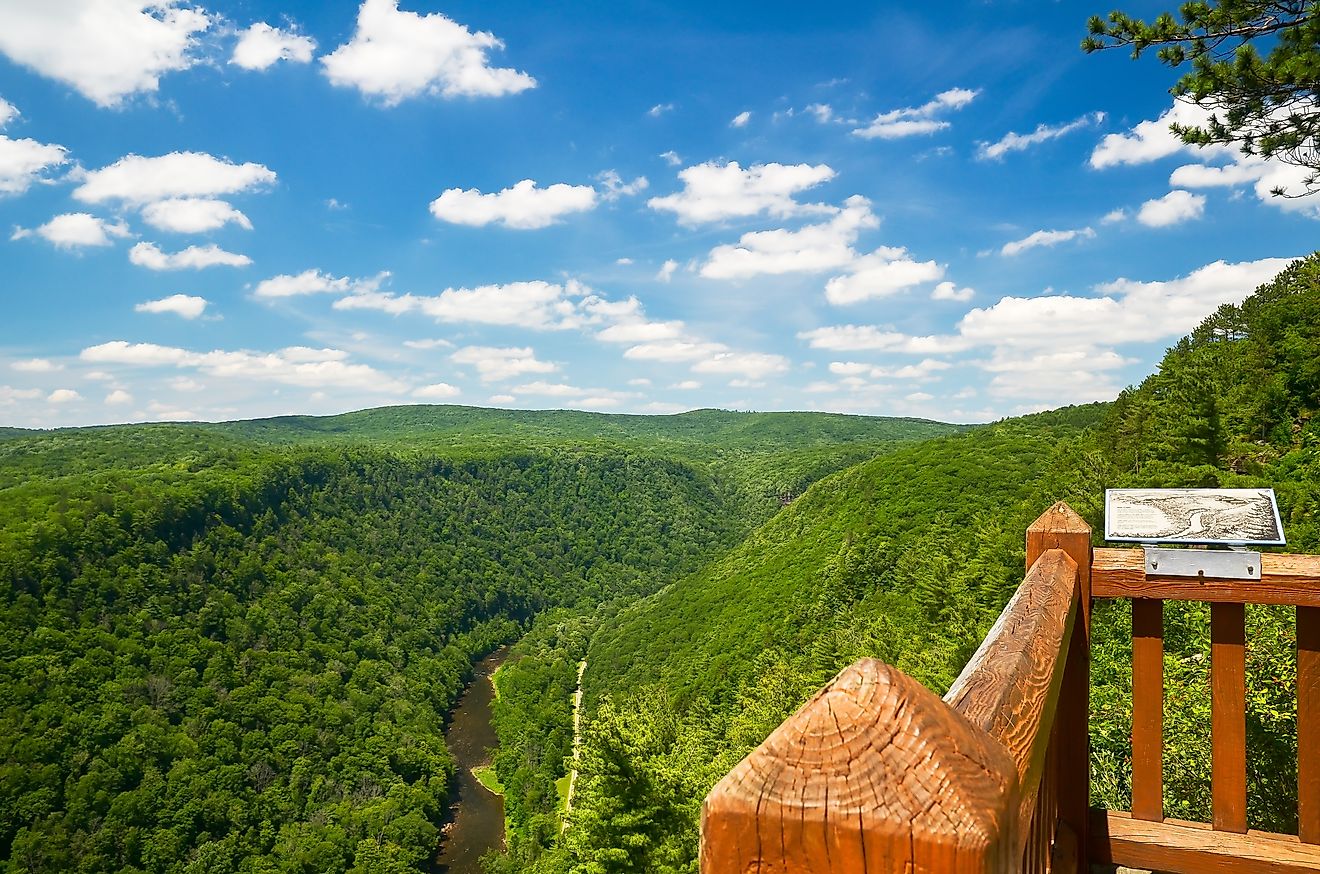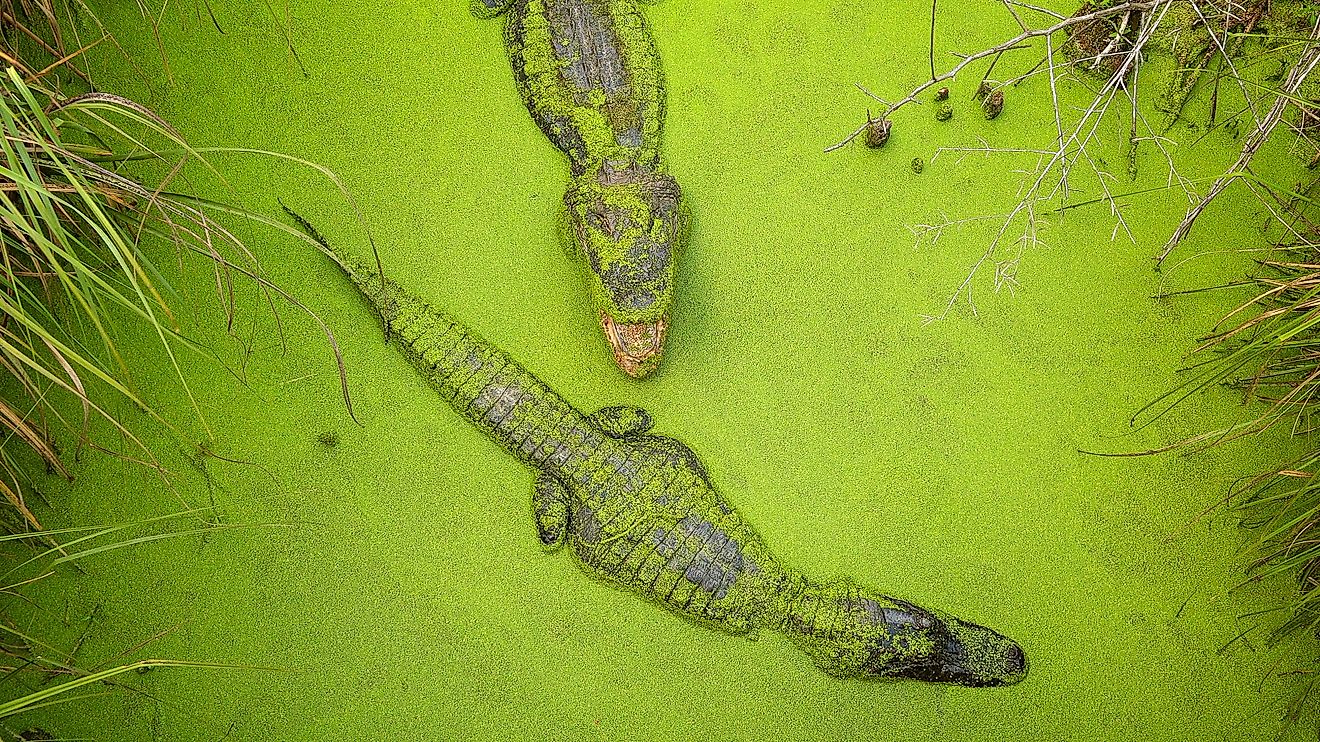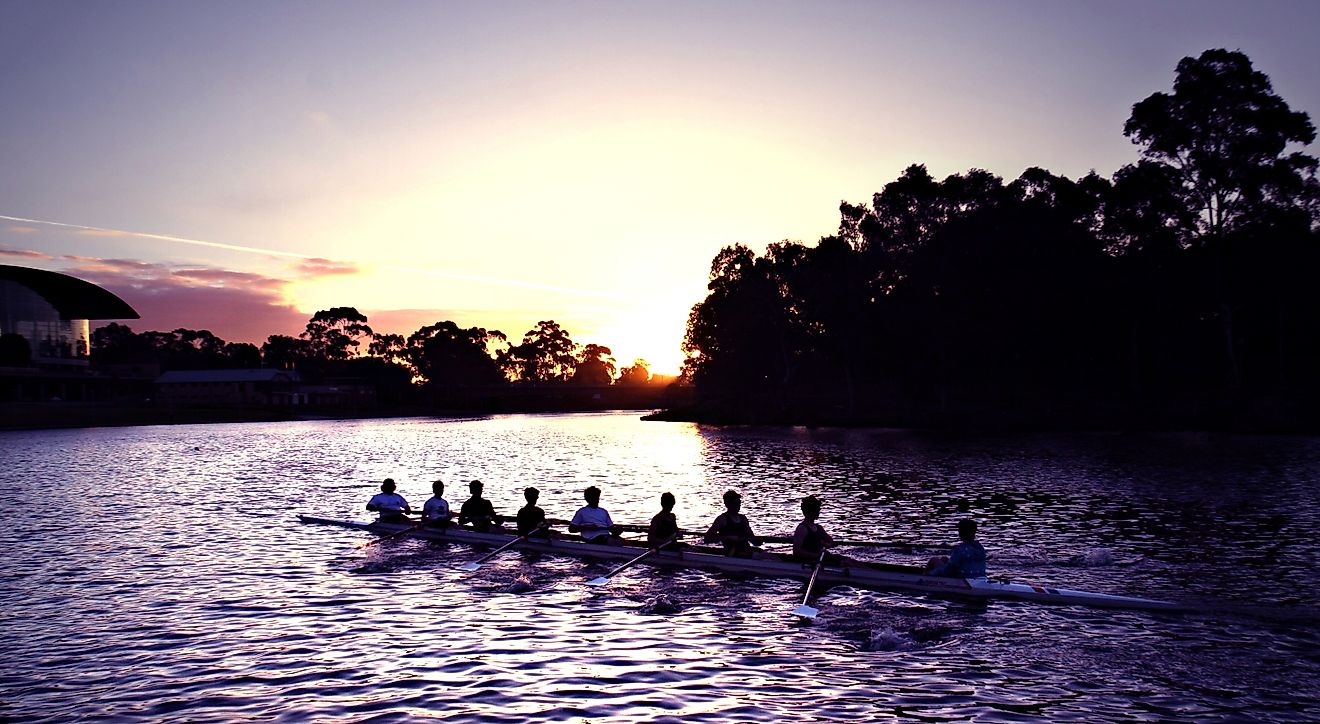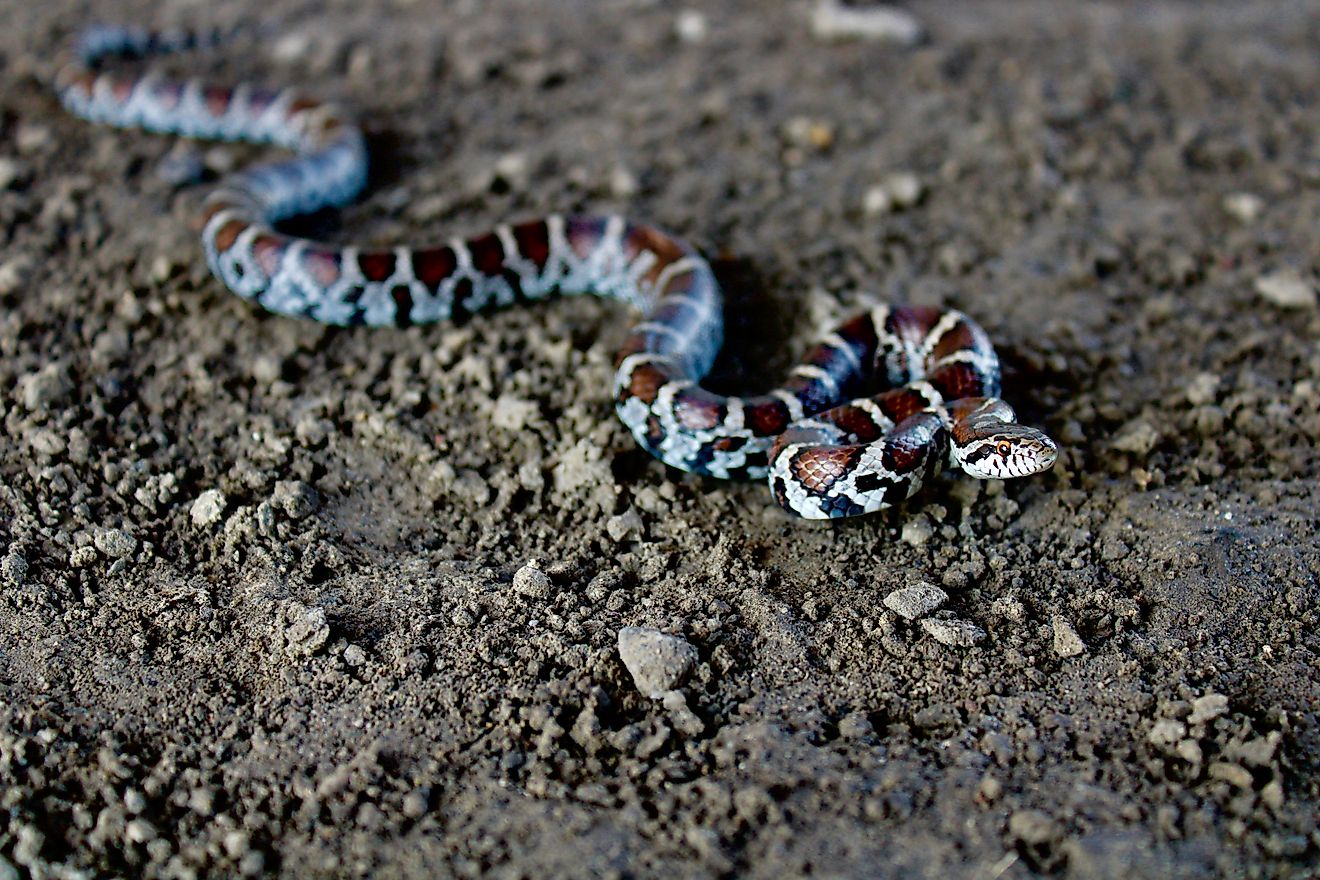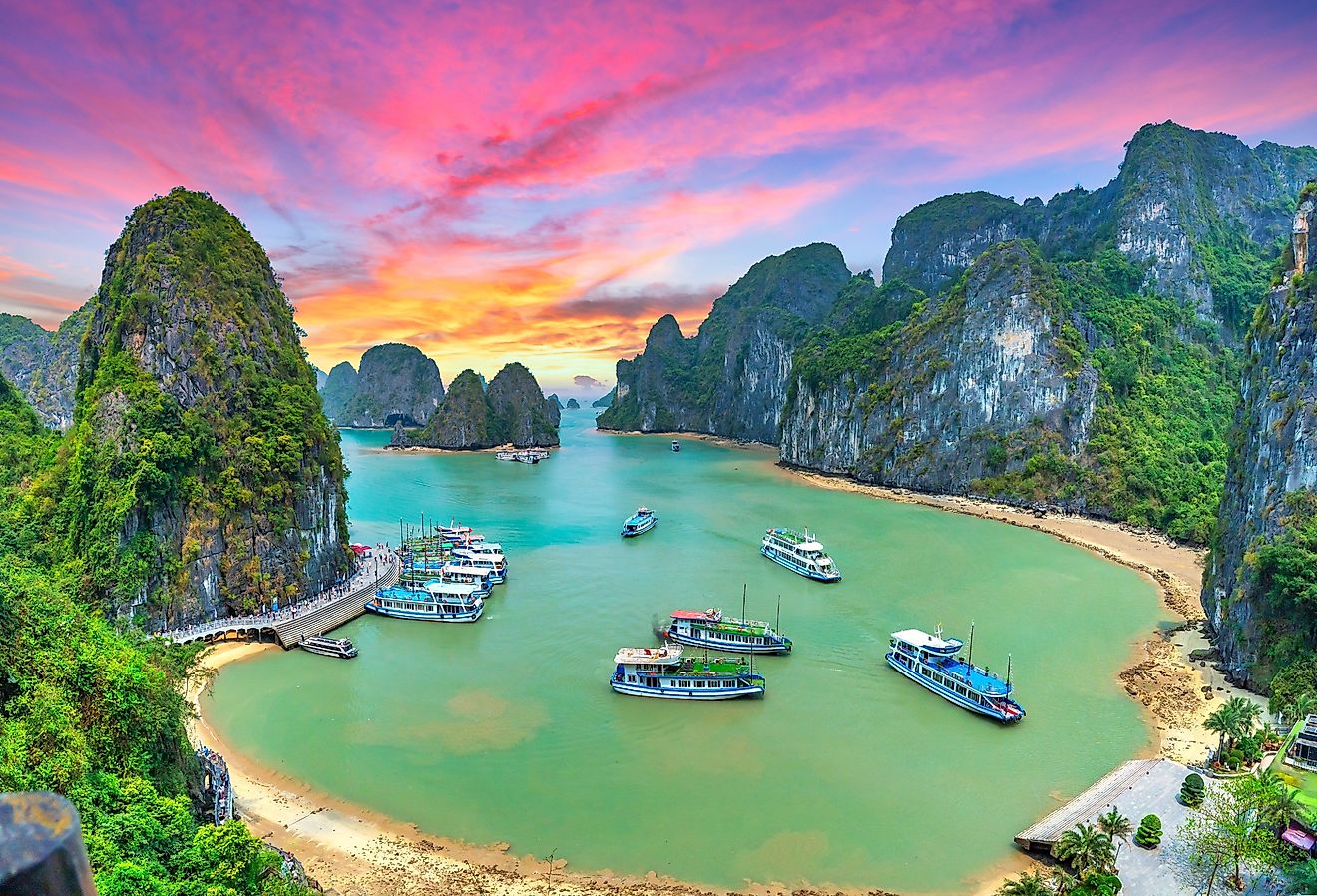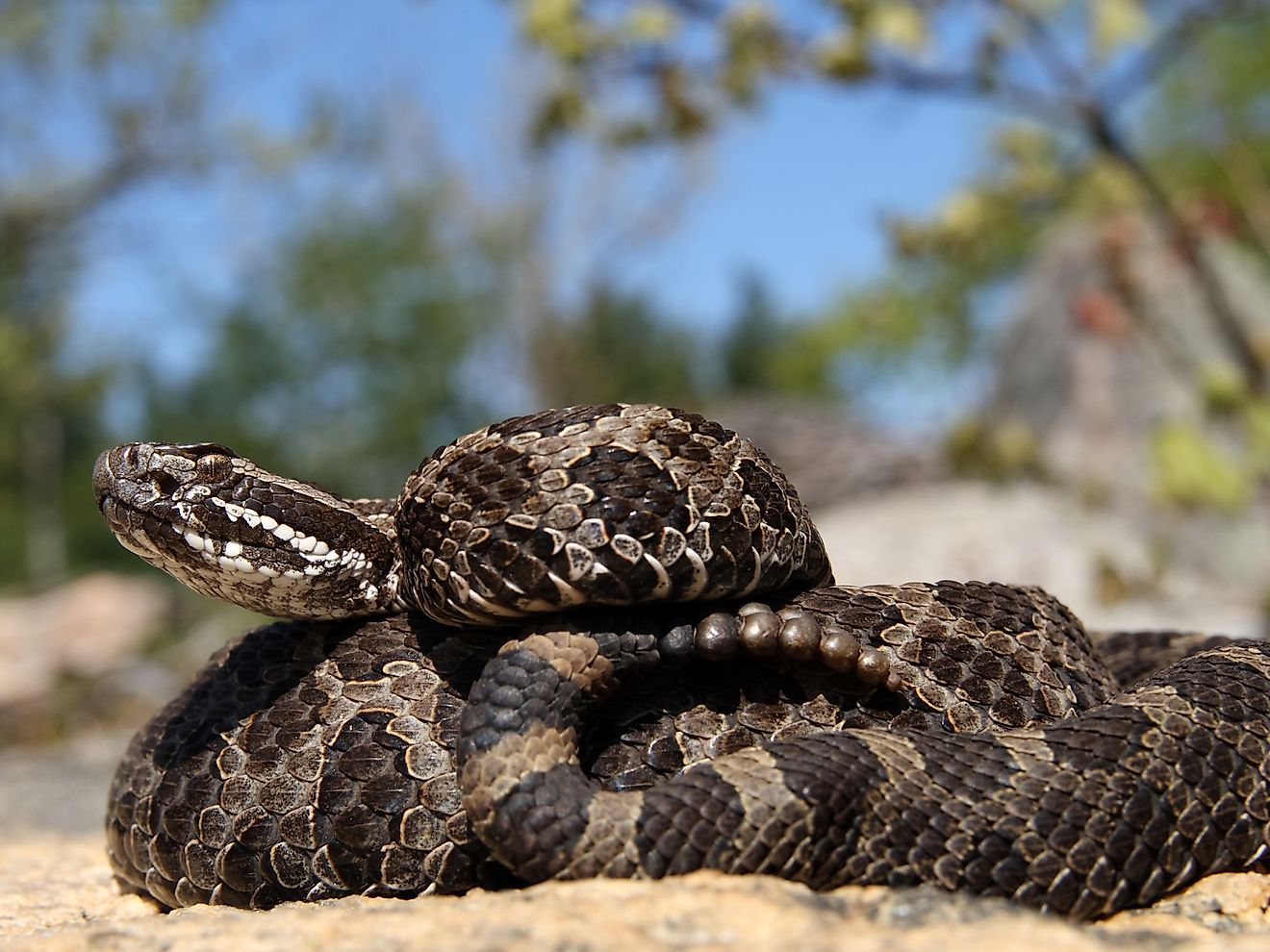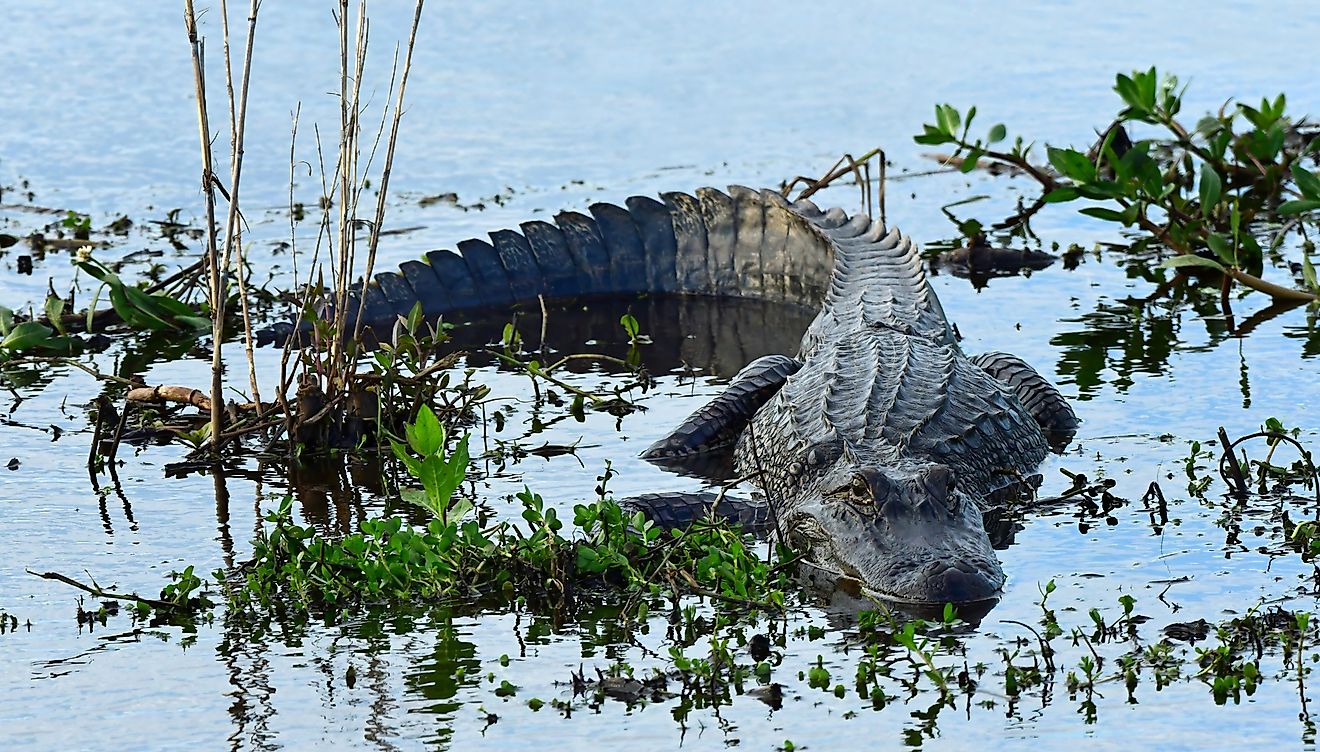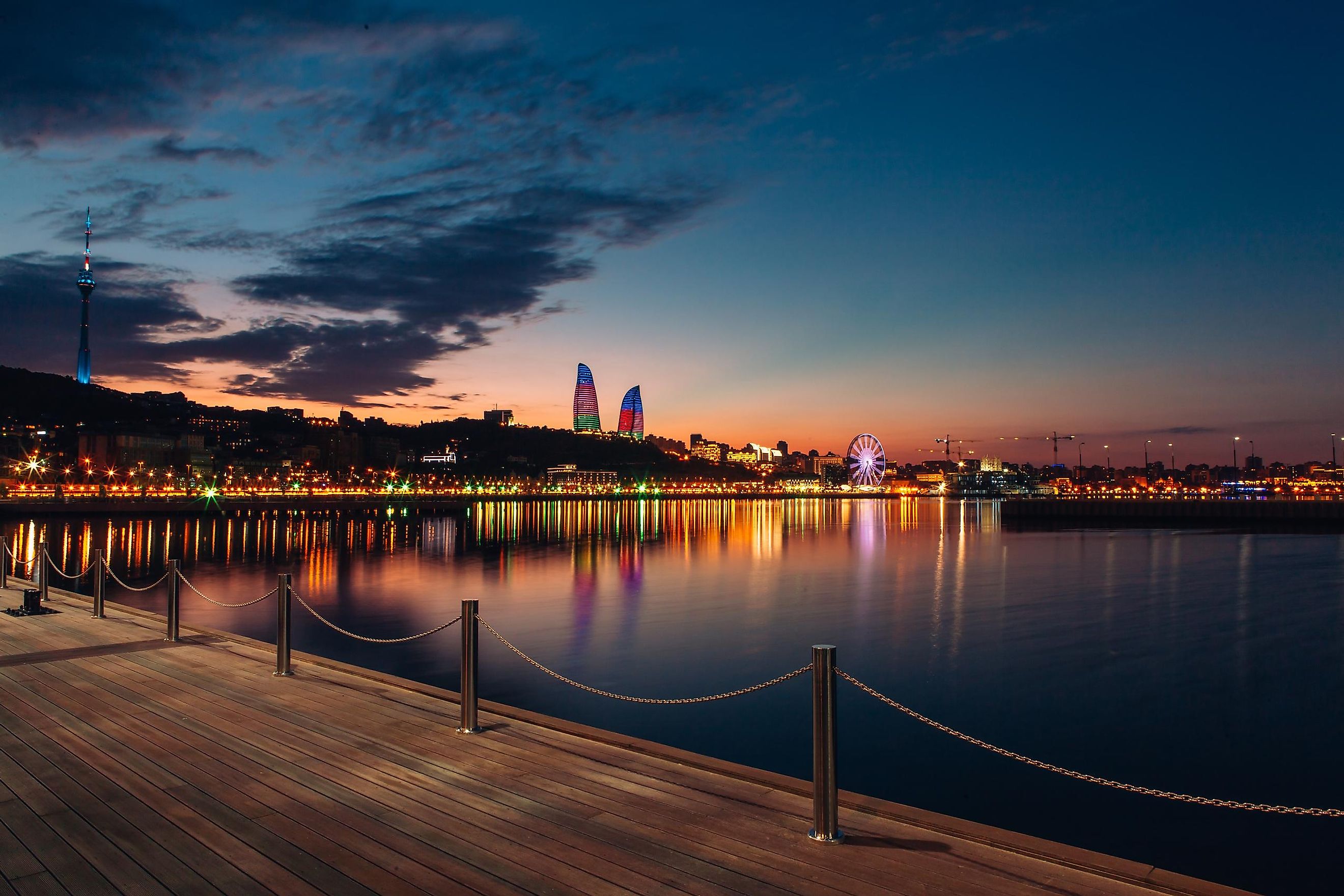
10 Largest Lakes In Asia
Asia is the largest as well as the most populous continent in the world. It covers an area of 44, 579,000 km2 and is home to approximately 4.5 billion people. Due to its massive size, the Asian continent features diverse climatic conditions and several geophysical landmarks. The continent also comprises a large number of lakes that considerably vary in their origin, shape, and size. The 10 largest lakes in Asia are discussed in this article.
Contents:
- Caspian Sea
- Lake Baikal
- Lake Balkhash
- Lake Taymir
- Issyk-Kul Lake
- Lake Urmia
- Qinghai Lake
- Lake Khanka
- Sarygamysh Lake
- Van Lake
1. Caspian Sea
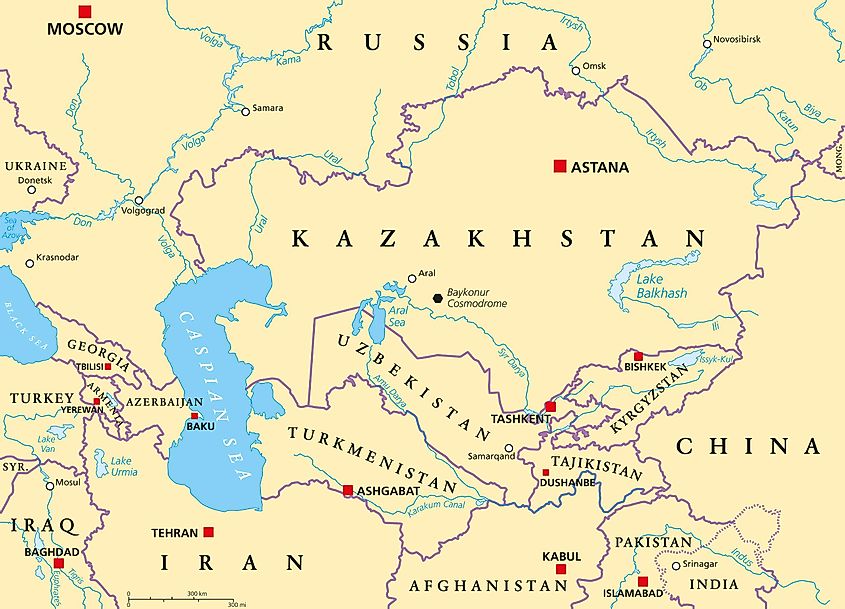
The Caspian Sea is the largest lake in Asia as well as the largest inland water body in the world. Covering an area of 386,400 km2, the Caspian Sea is located to the east of the Caucasus Mountains, west of the Central Asian steppes, south of the Russian plains in Eastern Europe, and north of Western Asia’s Iranian Plateau. This endorheic basin is bordered by Kazakhstan in the north and east, the Russian Federation in the north and west, Azerbaijan in the southwest, Iran in the south and Turkmenistan along the southern part of the eastern coast.
The Caspian Sea is about 1,200km long and has an average width of about 320 km. It has a maximum depth of 1,025 m, while its estimated average depth is 211 m. The water in the Caspian Sea is called “Caspi-brackish” as it is neither completely freshwater nor completely saline water. The mean salinity of the Caspian Sea is about 1.2% which is one-third of the salinity of seawater. The Caspian Sea receives most of its water from the Volga, Ural, Kura, and Amu Darya rivers and has a water volume of approximately 78,200 km3.
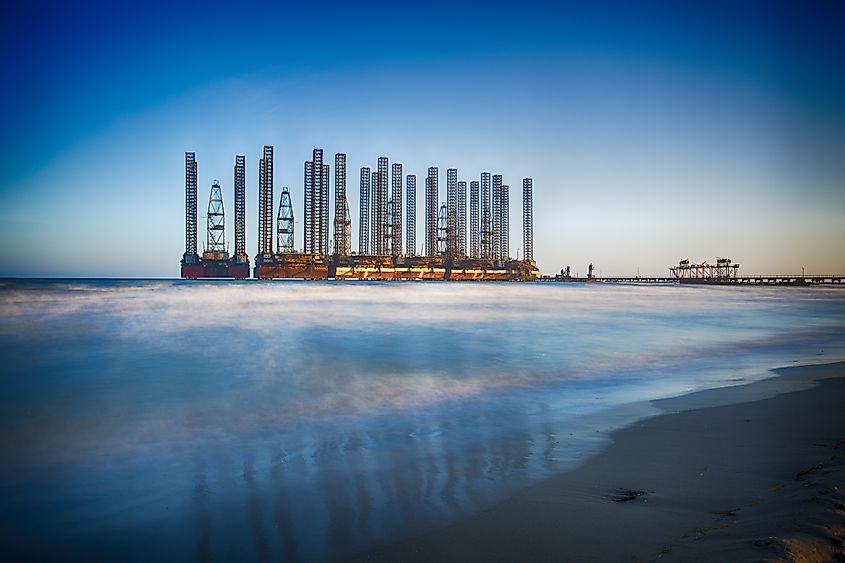
The Caspian Sea region is rich in biodiversity and hosts a variety of floral and faunal species. Some of the endemic species that are found here include the Caspian turtle, Caspian gull, Caspian tern, Caspian seal, Caspian white-fish, and Caspian salmon. Different sturgeon species including the beluga, bastard, sterlet, and starry are native to the Caspian Sea. Sturgeon is a source of caviar, which is one of the most important economic products of the Caspian Sea. The marginal areas of the Caspian Sea contain many petroleum reserves. However, the rich biodiversity of the Caspian Sea is threatened by overfishing, pollution from oil industries, and several dams that are built on the rivers that drain into the sea.
2. Lake Baikal
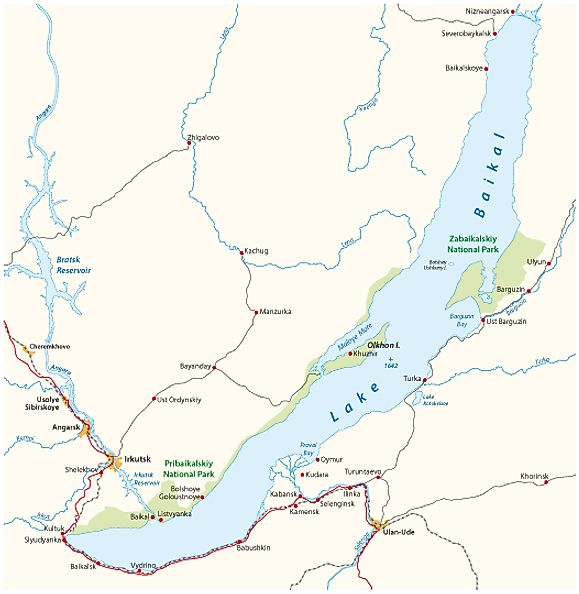
Covering an area of 31,722 km2, Lake Baikal is the world’s seventh-largest lake as well as the second-largest in the Asian continent. It is situated in the southern part of Siberia and is bounded by the Buryat Republic in the southeast and by Russia’s Irkutsk Oblast in the northwest. With a water volume of 23,615.39 km3, it is the world’s largest freshwater lake and it contains about 23% of the entire planet’s freshwater. Lake Baikal is about 636 km long and has a maximum width of 79km. It is considered the deepest lake in the world, which reaches a maximum depth of 1,642 m and an average depth of 744.4 m. The lake was formed as an ancient rift valley about 25 to 30 million years ago and is, therefore, one of the oldest lakes on the planet. The rivers that flow into Lake Baikal are Barguzin, Selenga, Sarma, Snezhnaya, Turka, and Upper Angara. The waters of the lake empty into the Angara River.
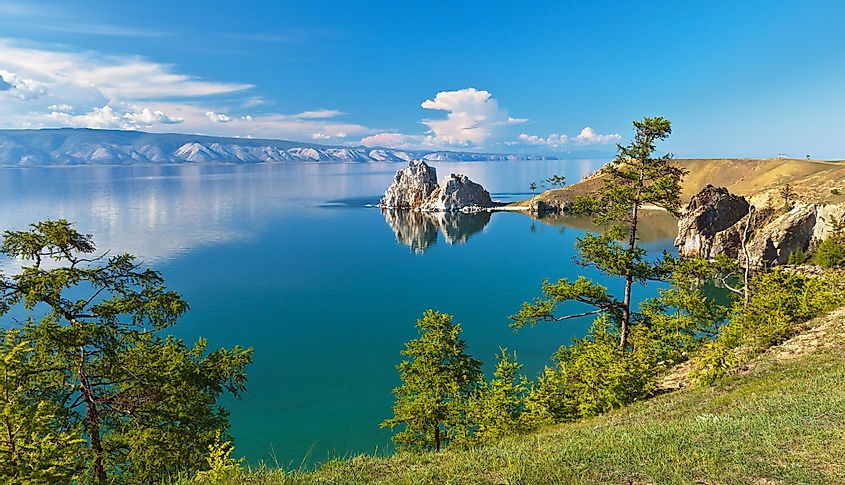
Lake Baikal hosts numerous floral and faunal species, the majority of which are endemic to the region. The aquatic flora of the lake is dominated by many species of green algae such as Tetraspora, Draparnaldioides, and Cladophora. Some of the notable faunal species that are found here include the Baikal seal, Siberian red deer, Eurasian brown bear, Siberian chipmunk, red squirrel, and Alpine hare. Numerous fish species are also found in Lake Baikal including omul, Baikal sturgeon, Baikal white graying, and Baikal black graying, among others. About 236 avian species are found in the Lake Baikal region. The lake also hosts several endemic invertebrate faunal species like copepods, zooplankton, amphipods, ostracod crustaceans, freshwater snails, oligochaetes, leeches, polychaetes, nematodes, flatworms, and sponges. Lake Baikal was declared as a World Heritage Site by UNESCO in 1996.
3. Lake Balkhash

Covering an area of 16,400 km2, Lake Balkhash is the third-largest lake in Asia and the world’s 15th-largest lake. The lake is located in southeastern Kazakhstan and forms a part of a large endorheic basin that also extends into China and Kyrgyzstan. Lake Balkhash is about 605 km long and has a maximum width of 19 km in its eastern part and 74 km in its western part. The lake reaches a maximum depth of 26 m and an average depth of 5.8 m. The Aksu, Byan, Ili, Karatal, Kapal, Koksu, and Lepsy rivers which emerge from the endorheic basin, drain into the Lake Balkhash. A central narrow strait divides the lake into two portions of which the eastern half is saline water and the western half is freshwater. The lake is shrinking in size due to numerous dams that have been built for hydroelectric generation and other industrial purposes.
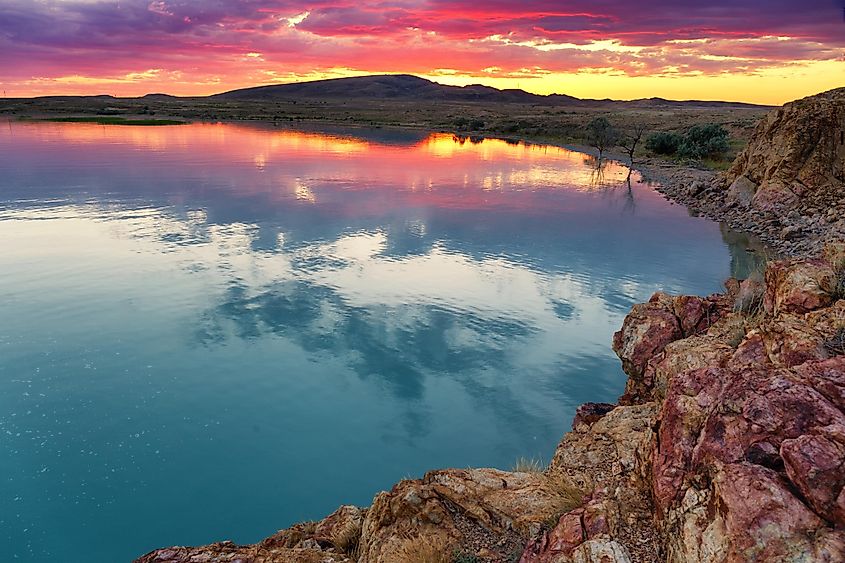
Lake Balkhash supports many avian species like Eurasian spoonbill, cormorants, marbled teal, golden eagle, Dalmatian pelican, white-tail eagle, and great egret. The shores of Lake Balkhash are covered by riparian forests and willow trees. Balkhash in Kazakhstan is the largest city located on the northern shores of Lake Balkhash.
4. Lake Taymyr
Covering an area of 6,990 km2, Lake Taymyr is the fourth-largest lake in Asia, located to the south of the Byrranga Mountains in Russia’s Taymyr Peninsula. This irregular-shaped lake has a length of about 165 km and has a maximum width of 23 km at its widest point. The lake reaches a maximum depth of 26 m and an average depth of 2.8 m. Some of the notable rivers that drain into the lake include the Upper Taymyra, Bikada-Nguoma, Kalamissamo, Severnaya, Yamu-Tarida, and Zapadnaya rivers. The waters of the lake empty into the Lower Taymyra River.
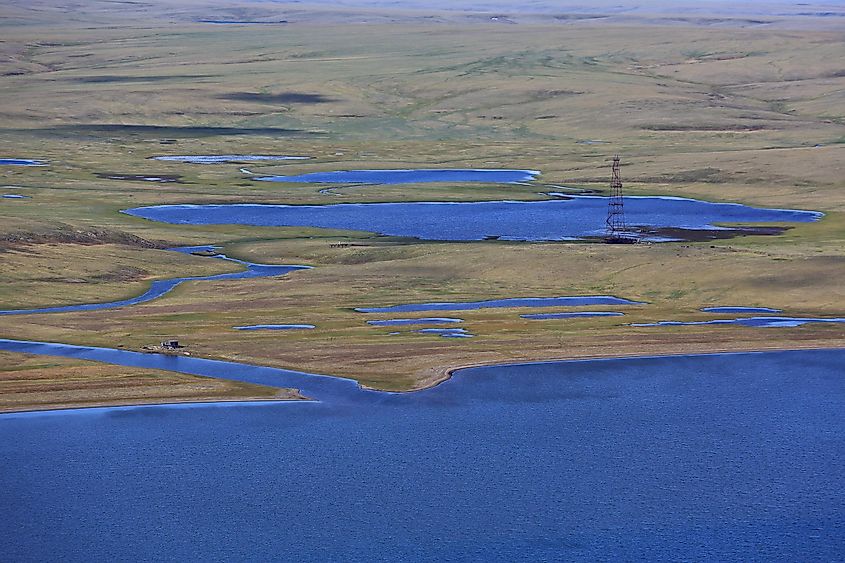
Lake Taymyr remains covered with ice during the winter season from September to June. Various species of fish like muksun, loach, and sig survive in the cold waters of the lake. Small amounts of radioactive plutonium have been found in the waters of Lake Taymyr as a result of the nuclear tests that were conducted in the Novaya Zemlya archipelago during the Cold War.
5. Issyk-Kul Lake
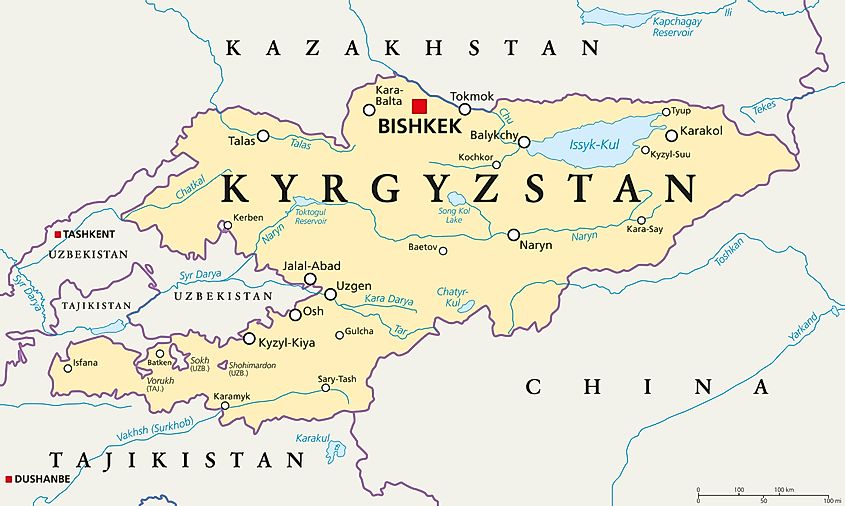
Covering an area of 6,236 km2, Issyk-Kul Lake is the fifth-largest lake in Asia located in Kyrgyzstan. It is separated from Kazakhstan in the north by the Kungey Alatau mountain range, and from Western China in the south by the Tien Shan Mountains. The lake is about 182 km long and has a maximum width of 60 km. Issyk-Kul Lake reaches a maximum depth of 668 m and is the world’s seventh-deepest lake. It is also the world’s second-largest mountain lake, situated at an elevation of 1,607 m. It has been estimated that a total of 118 rivers and small streams drain into Issyk-Kul Lake. However, since the lake is an endorheic basin, there are no outflows from the lake. With a water volume of 1,738 km3, the lake is considered the world’s 10th-largest lake in terms of its volume. The spectacular snow-capped peaks of the Teskey Ala-Too mountain range surround the southern shores of Lake Issyk-Kul.
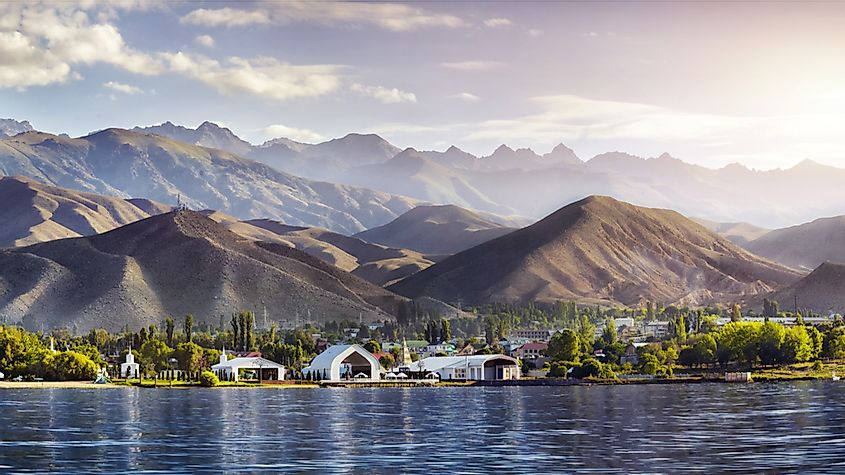
Lake Issyk-Kul supports several endemic fish species that are also highly threatened. These include Schmidt’s dace, Marinka, naked Osman, and Schmidt’s dace. The lake also forms a part of the Issyk-Kul Biosphere Reserve and has been designated a Ramsar Wetland Site.
6. Lake Urmia
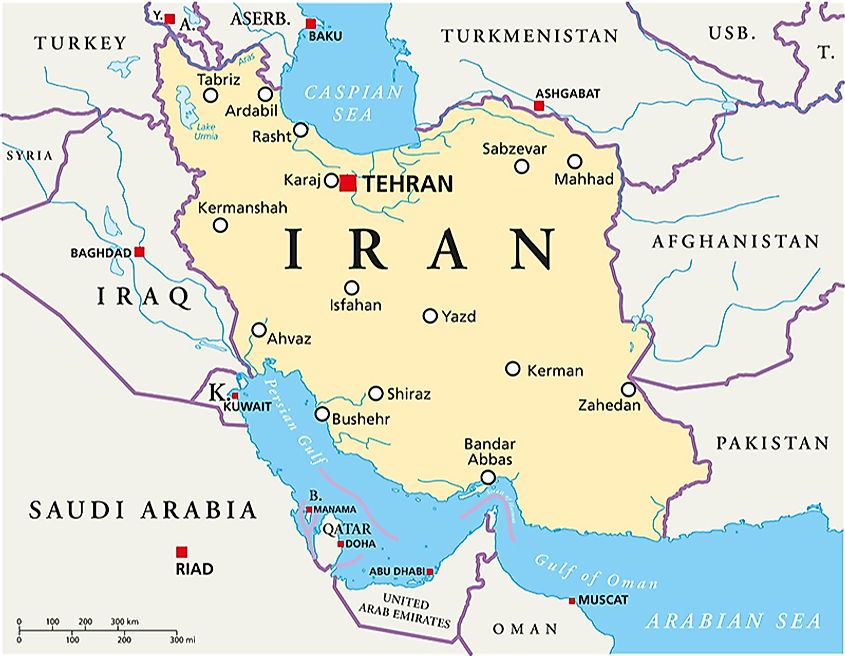
Covering an area of 6,001 km2, Lake Urmia is Asia’s sixth-largest lake located in the northwestern part of Iran. This endorheic lake is about 140 km in length and has a maximum width of 55 km. Lake Urmia reaches a maximum depth of 16 m and is widely known for its extremely saline waters. Several rivers including Gadar, Mahabad, Nazlou, Boyuk Chay, Leylan, and Zola flow into Lake Urmia. The lake was much larger in ancient times, but as a result of the damming of rivers that flow into the lake and along with the pumping of groundwater, has led to a decrease in the lake’s volume.
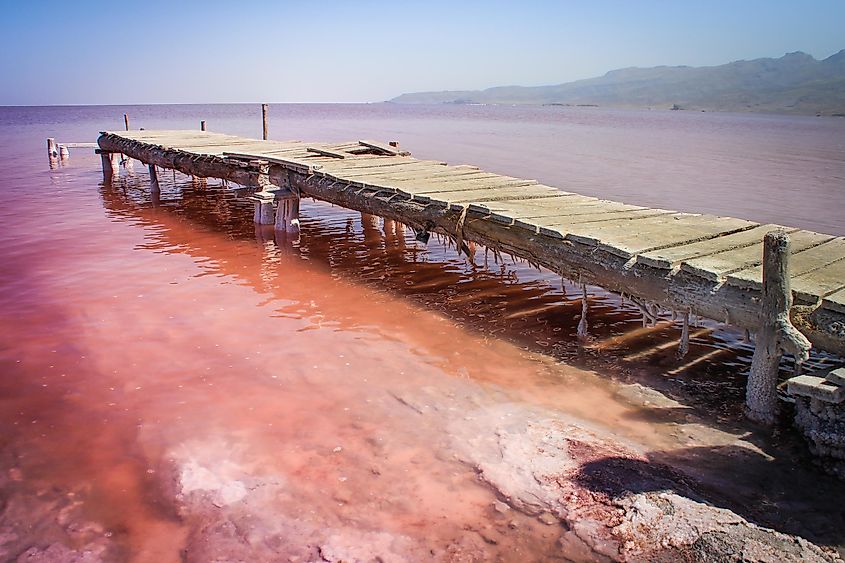
Lake Urmia supports rich biodiversity and a large number of floral and faunal species have been recorded from the lake area. The lake is dotted by more than 102 small, rocky islands that serve as resting sites for many migratory birds like ibises, avocets, gulls, spoonbills, pelicans, flamingos, etc. Lake Urmia has been recognized as a Ramsar Site as well as a UNESCO Biosphere Reserve. The Iranian Department of Environment also protects the lake as a National Park.
7. Qinghai Lake
Qinghai Lake is an alkaline and saline lake that forms a part of an endorheic basin in the Province of Qinghai in the People’s Republic of China. The size of the lake has fluctuated several times and currently, the lake covers an area of 4,543 km2 and reaches a maximum depth of 32.8 m. It has been estimated that more than 23 rivers and small streams drain into Qinghai Lake. The Sand Islands and Bird Islands (Cormorant and Egg islands) are also located in the lake.
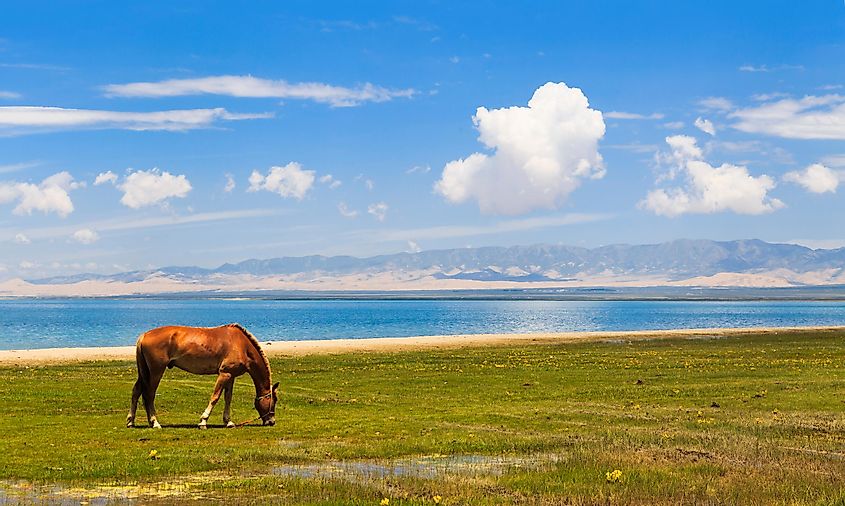
The native species that are found in the saline waters of Qinghai Lake include the naked carp and the different species of stone loaches. The lake is also used as a stopover point by several migratory birds.
8. Lake Khanka
Lake Khanka is positioned across the China-Russia border between Russia’s Primorsky Krai region and the Heilongjiang province of Northeast China. This pear-shaped lake covers an area of 4,190 km2 and has a length of about 90 km and a maximum width of 45 km. Lake Khanka is relatively shallow and reaches a maximum depth of 10.6 m and an average depth of 4.5 m. About 24 rivers drain into Lake Khanka while the Songacha River serves as its primary outflow.
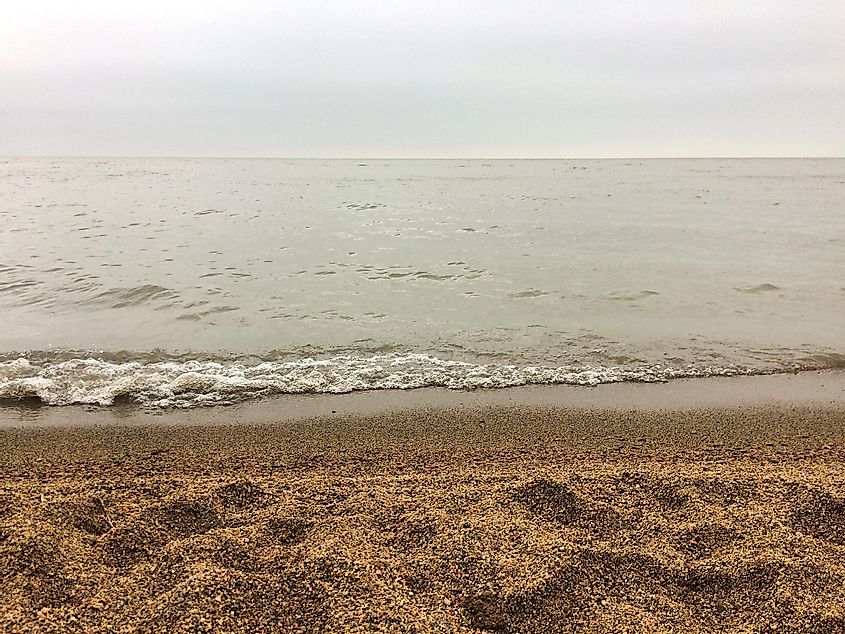
Lake Khanka supports a rich diversity of flora and fauna. Since 1971, the lake has been designated a wetland of international importance under the Ramsar Convention.
9. Sarygamysh Lake
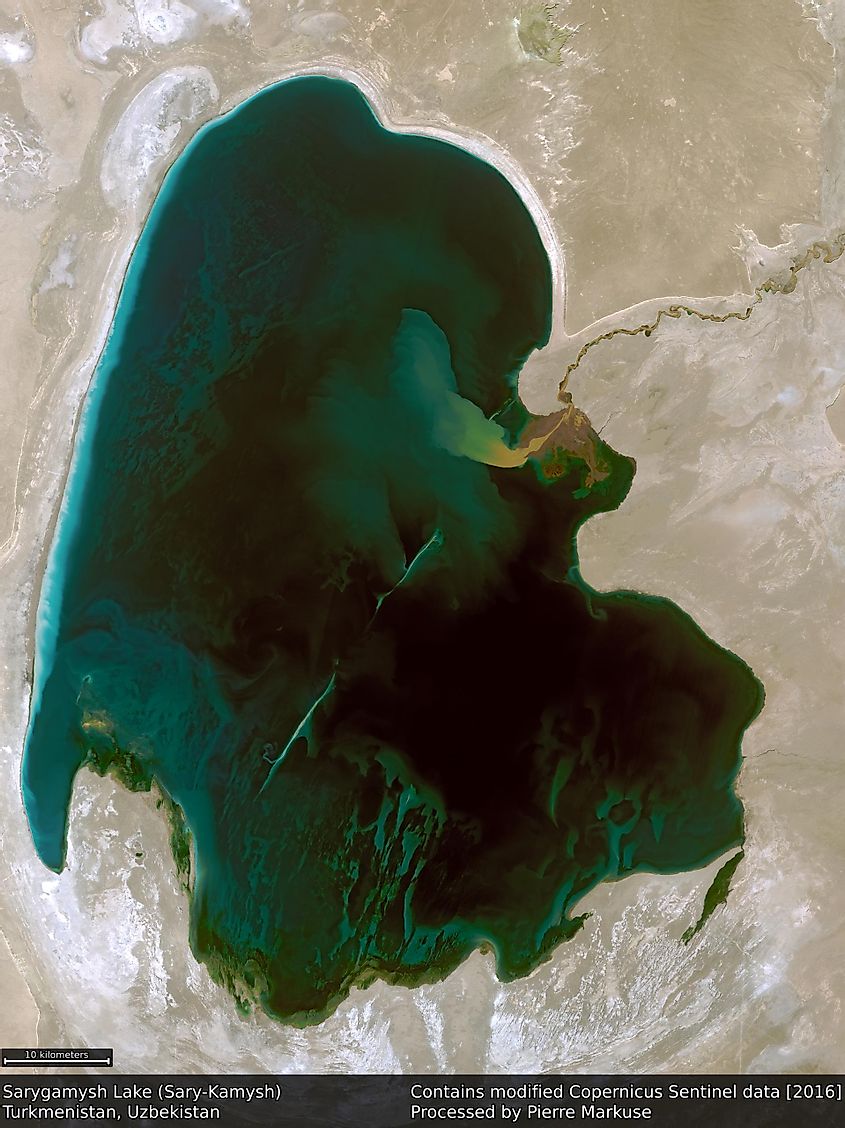
Covering an area of 3,955 km2, the Sarygamysh Lake is situated in Central Asia near the boundary between Uzbekistan and Turkmenistan. The lake has a length of about 125 km and reaches a maximum depth of 40 m. The Uzboy River served as the lake’s primary inflow until the 17th century, but currently, the lake is fed by the Amu Darya River and surface water runoffs from the surrounding agricultural areas. The waters of the Sarygamysh Lake are therefore highly polluted and contain high amounts of heavy metals, herbicides, and pesticides.
10. Van Lake
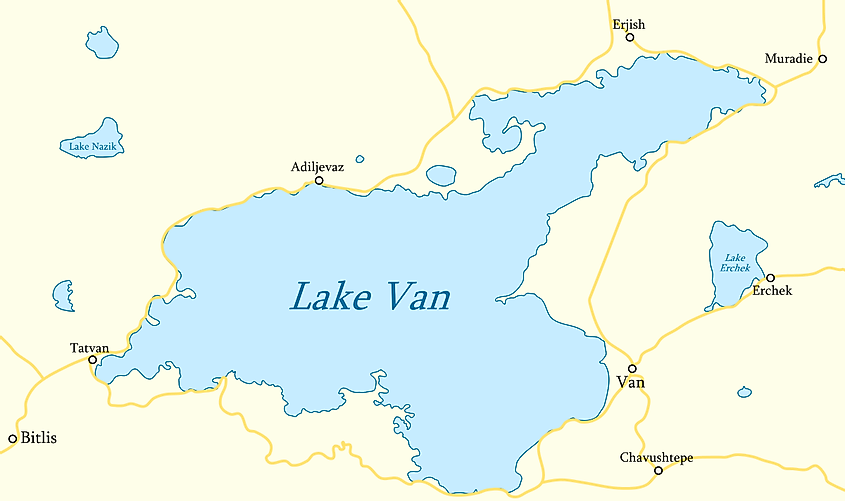
Covering an area of 3,755 km2, Van Lake is a saline soda lake that is situated in the eastern part of Turkey in the Bitlis and Van provinces. The lake has an average depth of 171 m and reaches a maximum depth of 451 m, with the western part of the lake being the deepest. Many small streams like Karasu, Bendimahi, and Zilan flow into the lake. This small freshwater inflow accounts for the high salinity of the lake. Several small islands like Akdamar, Adir, Kus, Carpanak are also located in Lake Van.
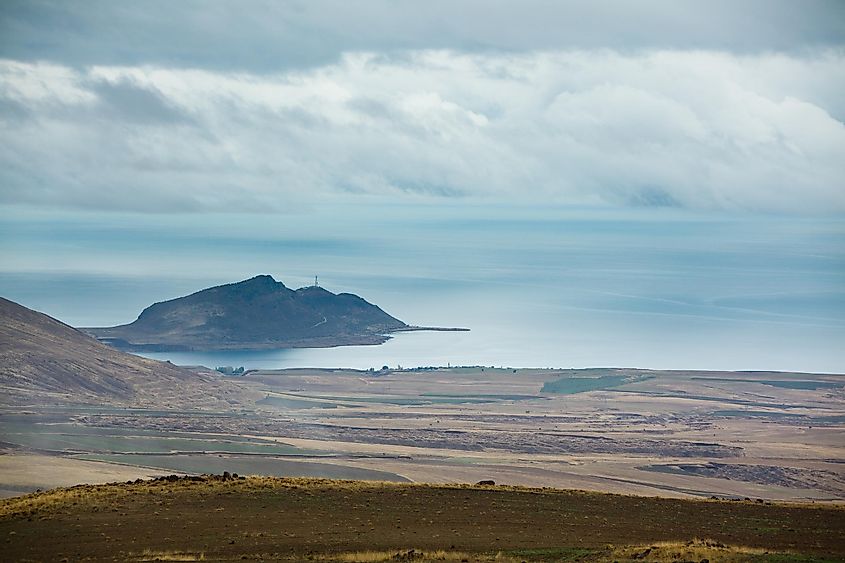
Lake Van supports approximately 103 species of phytoplankton, 36 species of zooplankton, and various brackish water fish like pearl mullet and stone loach. The rare Van cat domestic cat breed is also found in the lake region.
Largest Lakes In Asia
| Rank | Lake | Area (km2) | Countries |
|---|---|---|---|
| 1 | Caspian Sea | 386,400 | Azerbaijan, Iran, Kazakhstan, Russia, Turkmenistan |
| 2 | Lake Baikal | 31,722 | Russia |
| 3 | Lake Balkhash | 16,400 | Kazakhstan |
| 4 | Lake Taymir | 6,990 | Russia |
| 5 | Issyk-Kul Lake | 6,236 | Kyrgyzstan |
| 6 | Lake Urmia | 6,001 | Iran |
| 7 | Qinghai Lake | 4,543 | China |
| 8 | Lake Khanka | 4,190 | China, Russia |
| 9 | Sarygamysh Lake | 3,955 | Uzbekistan, Turkmenistan |
| 10 | Van Lake | 3,755 | Turkey |
| 11 | Uvs Lake | 3,350 | Mongolia |
| 12 | Poyang Lake | 3,210 | China |



